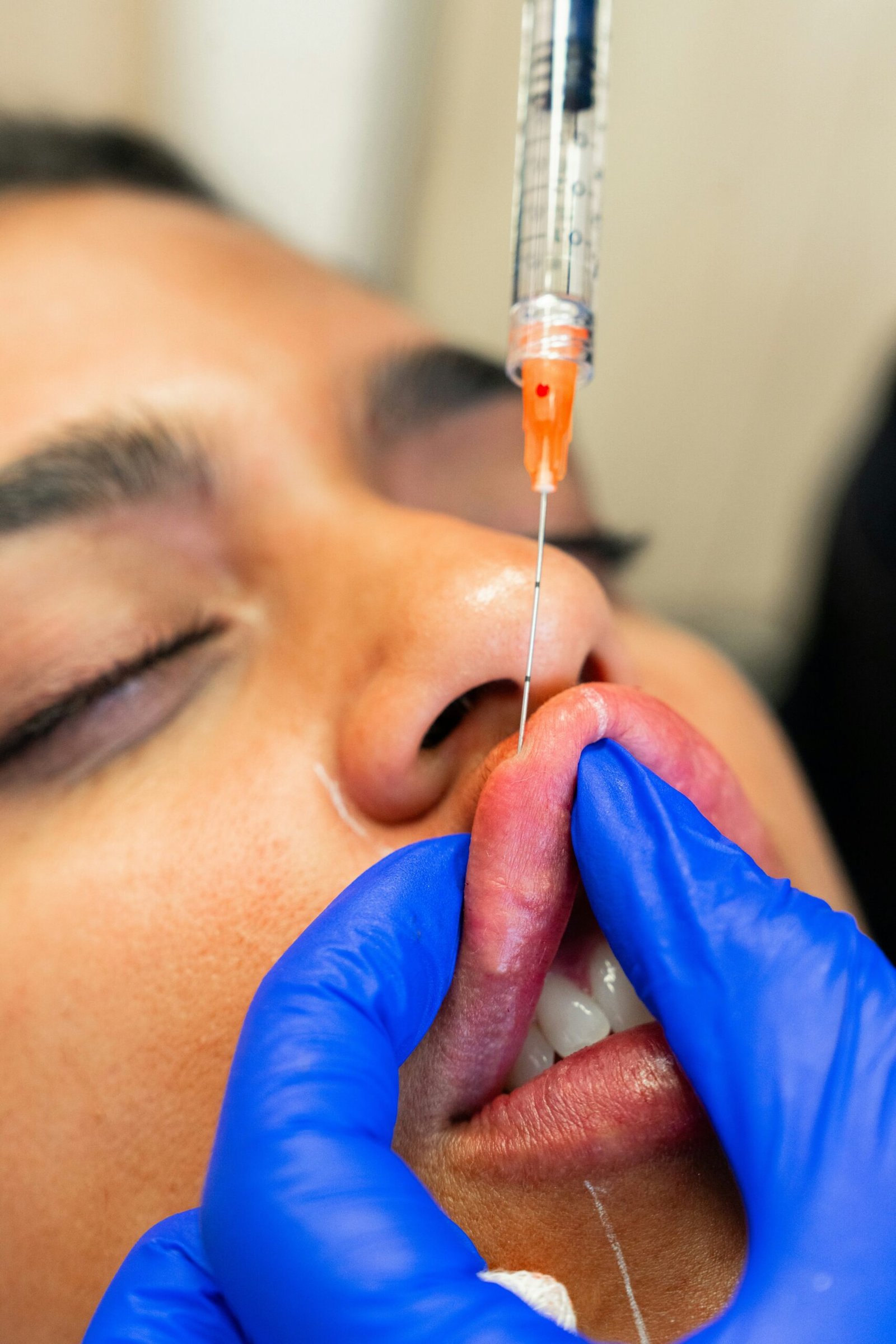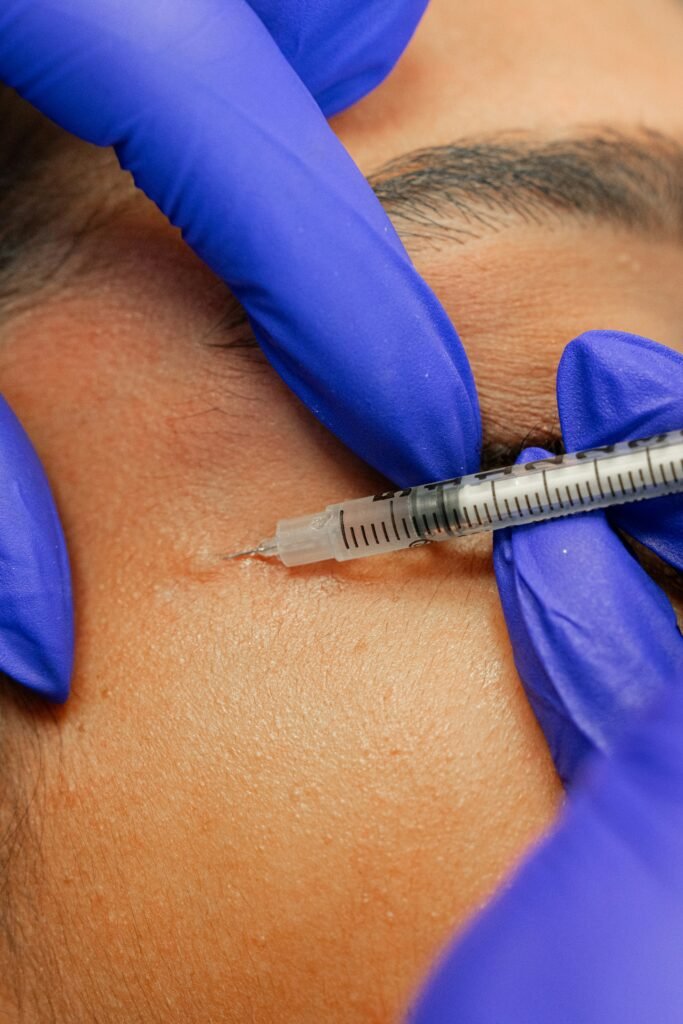Health
10 Reasons More Providers Are Now Using Remote Patient Monitoring

In an era where the threat of another pandemic looms over us, being prepared with effective healthcare solutions is not just a convenience, it’s a necessity. UPL and Sinc Healthcare have emerged as pioneers in remote patient monitoring, offering a suite of services that are not only innovative but also crucial in ensuring healthcare resilience. These platforms provide an array of benefits that are particularly vital in scenarios where traditional healthcare systems might be under strain due to a pandemic.
- Convenience and Accessibility: Patients can access healthcare services from the comfort of their own homes. This is especially beneficial for individuals with mobility issues, those living in remote areas, or anyone who finds it challenging to make frequent trips to a healthcare provider.
- Continuous Monitoring and Early Intervention: With remote patient monitoring, healthcare providers can continuously track
 vital health metrics. This constant monitoring can lead to early detection of potential health issues, allowing for timely intervention and treatment.
vital health metrics. This constant monitoring can lead to early detection of potential health issues, allowing for timely intervention and treatment. - Personalized Care Plans: Both UPL and Sinc Healthcare emphasize personalized healthcare. They tailor care plans to individual patient needs, ensuring that each patient receives the most appropriate and effective care.
- Reduced Need for In-Person Visits: For routine check-ups or monitoring of chronic conditions, patients may not need to visit healthcare facilities as frequently. This not only saves time but also reduces the exposure to potential infections, which is particularly important in the post-pandemic era.
- Improved Patient Engagement and Education: These platforms often include features that help educate patients about their health conditions, encouraging them to take an active role in managing their health.
- Enhanced Communication with Healthcare Providers: Patients have better and more frequent communication channels with their healthcare providers. This fosters a stronger patient-provider relationship and ensures that patients feel supported in their healthcare journey.
- Cost-Effectiveness: By reducing the need for in-person visits and enabling early detection of health issues, these services can potentially lower healthcare costs for patients in the long run.
 Peace of Mind: Knowing that their health is being monitored regularly and that they can easily reach their healthcare provider provides patients with a significant sense of security and peace of mind.
Peace of Mind: Knowing that their health is being monitored regularly and that they can easily reach their healthcare provider provides patients with a significant sense of security and peace of mind.- Flexibility for Caregivers: For patients who rely on caregivers, remote patient monitoring services offer a more flexible and less burdensome way to manage healthcare, as it reduces the need for frequent transportation to healthcare facilities.
- Data-Driven Healthcare: With the integration of AI and data analytics, these platforms can offer insights that lead to more informed healthcare decisions and improved treatment outcomes.
The potential of facing another pandemic underscores the importance of having robust healthcare systems that can adapt to such challenges. UPL and Sinc Healthcare stand out as beacons of innovation in this regard, offering services that not only cater to the current healthcare needs but also equip us for future uncertainties. Their emphasis on remote monitoring, personalized care plans, and data-driven healthcare ensures that patients receive uninterrupted, quality care even in the most challenging times. Adopting these platforms could be a key step in preparing for future healthcare crises, ensuring that patients maintain access to essential healthcare services while minimizing the risks associated with in-person medical visits.
If you are a healthcare provider interested in learning more about our services and how they can benefit your practice, please fill out this form here to get in touch with us.
Health
Why Does Gen Z Look Like They’ve Seen 10 Seasons of Life Already?

If you’ve ever scrolled through TikTok and wondered why so many Gen Zers—supposedly the youngest adults—look like they’ve already survived a decade of plot twists, you’re not alone. The internet is buzzing with jokes about Gen Z “aging like milk,” but behind the memes are real social and cultural trends that explain why this generation seems to be skipping straight from teenhood to tired.

1. Stress and Burnout: The Fast Track to Looking Older
Gen Z is facing unprecedented stress, and it’s showing on their faces. According to a 2023 Cigna International Health survey, 91% of 18-to-24-year-olds report being stressed, and almost all (98%) are experiencing symptoms of burnout.Financial pressures, academic competition, and global crises have led to Gen Z hitting “peak burnout” at just 25—years earlier than previous generations. Chronic stress increases cortisol, which can speed up the aging process by affecting skin health and energy levels.
“Gen Z and millennials reported feeling burnout at a much earlier age than past generations, and one of the top stressors reported was finances.” — Spectrum News10
2. Prejuvenation and Cosmetic Interventions
Gen Z is pioneering the “prejuvenation” trend—preventative anti-aging treatments like Botox and fillers, often before any wrinkles appear. While the goal is to keep skin looking young, overuse and starting too early can ironically make faces look more mature or unnatural. The normalization of cosmetic procedures at a young age is a sharp departure from previous generations, who typically waited until visible aging set in.
3. Advanced Makeup and Beauty Routines
Social media has given Gen Z access to advanced makeup tutorials and beauty trends. Heavy contouring, full-coverage foundations, and elaborate skincare routines are common—even among teens. While these techniques look flawless on camera, they can add years in real life, especially when paired with fashion choices that skew mature.

4. Social Media Pressure and Comparison
Gen Z lives online, where the pressure to look perfect is relentless. The constant comparison to filtered and edited images leads many to chase unattainable standards, fueling anxiety about aging and appearance. This “perception drift” can prompt overcorrection—more makeup, more procedures, more stress—which paradoxically accelerates the very signs of aging they’re trying to avoid.
5. It’s Not Just You—Even Gen Z Notices
The “aging like milk” meme has exploded on social media, with young adults sharing their worries about looking older than they are. The oldest Gen Zers are only around 27, but many feel—and look—decades older, thanks to a mix of real stress and digital distortion.
The Bottom Line
Gen Z’s “seen it all” look is the product of a perfect storm: relentless stress, early cosmetic interventions, advanced makeup skills, and the pressure of social media perfection. While some of it is just the reality of growing up, much is driven by cultural and technological shifts unique to this generation.
For a deeper dive into this phenomenon, check out the New York Times analysis on Gen Z’s aging anxiety1 and the Northeastern University feature on the “aging like milk” trend. And for a visual take, watch The Infographics Show’s video on why Gen Z looks so old.
Bolanle Media covers a wide range of topics, including film, technology, and culture. Our team creates easy-to-understand articles and news pieces that keep readers informed about the latest trends and events. If you’re looking for press coverage or want to share your story with a wider audience, we’d love to hear from you! Contact us today to discuss how we can help bring your news to life
Health
How Botox Destroys Women Forever

In recent years, Botox has become a household name, especially among young women. Once reserved for older individuals seeking to smooth out wrinkles, Botox—specifically “Baby Botox”—is now being marketed to Gen Z as a preventative measure against aging. But beneath the glossy Instagram posts and influencer endorsements lies a troubling reality: Botox may be doing more harm than good, both physically and psychologically.
The Botox Boom: A Generation at Risk
According to the video “The Evil Reason Gen Z Look Older” by Project Nightfall, Botox use among young people has surged dramatically. Data shows that 30% of Gen Z in the US have tried preventative Botox. The American Society of Plastic Surgeons reported a 73% increase in Botox procedures between 2019 and 2022 among young adults (source).
Why the sudden obsession? The beauty industry has rebranded Botox as “Baby Botox,” making it sound harmless and even cute. Social media influencers and celebrities flaunt their wrinkle-free faces, fueling the fear of natural aging and making Botox seem like a rite of passage rather than a medical procedure.

The Science: What Botox Really Does
Botox is short for botulinum toxin, one of the most potent neurotoxins known to science (CDC). It works by paralyzing facial muscles, temporarily smoothing out wrinkles. While this may sound appealing, the repeated use of Botox can have unintended—and sometimes irreversible—consequences.
Short-Term Risks
- Bruising, swelling, and pain at the injection site
- Drooping eyelids or uneven facial expressions
- Headaches and flu-like symptoms
- In rare cases, botulism-like symptoms such as muscle weakness, double vision, and difficulty swallowing (FDA)
Long-Term Consequences
- Muscle Atrophy: Continuous paralysis can cause facial muscles to weaken and shrink, leading to a “frozen” appearance (Harvard Health).
- Accelerated Aging: Ironically, long-term users may develop more pronounced wrinkles as the surrounding muscles compensate, or as the skin loses elasticity due to lack of movement (Dermatology Times).
- Emotional Numbing: Research suggests that paralyzing facial muscles can blunt emotional experiences, as facial expressions are linked to how we process and feel emotions (Scientific American).

The Psychological Toll
The normalization of Botox is creating a generation of women who fear natural aging and see wrinkles as a flaw to be fixed. This mindset is perpetuated by constant exposure to curated images online, where even minor imperfections are airbrushed away. The result? Body dysmorphia, low self-esteem, and an endless cycle of cosmetic procedures(Psychology Today).
Worse, the pressure to maintain a “perfect” appearance can lead to risky behaviors, such as attending unregulated “Botox parties” where injections are administered by unqualified individuals, increasing the risk of complications (NBC News).
The Financial Trap
Botox is not a one-time fix. Each session lasts only 3-4 months, meaning users must spend thousands of dollars annually to maintain results (Forbes). Over time, the body can develop antibodies to Botox, reducing its effectiveness and prompting higher doses or more frequent treatments (NIH).

The Bottom Line: Rethinking Beauty
Botox is not the fountain of youth it’s marketed to be. Instead, it’s a powerful drug with real risks—risks that are too often downplayed in the pursuit of profit and perfection. As more young women fall into the Botox trap, we risk creating a generation that is not only expressionless on the outside but also disconnected from their emotions and natural beauty.
Before considering Botox, especially at a young age, educate yourself on the risks and question the societal pressures driving this trend. True beauty is not about erasing every line—it’s about embracing who you are, at every age.
Further Reading and Sources
- The Evil Reason Gen Z Look Older (YouTube)
- Botox Cosmetic: What You Need to Know (FDA)
- The Psychological Costs of Cosmetic Procedures (Psychology Today)
- Botox Blunts More Than Just Wrinkles (Scientific American)
- Botox Parties Are on the Rise, Experts Warn of Dangers (NBC News)
- Botox Long-Term Use (Dermatology Times)
If you found this article insightful, share it with someone who needs to hear the truth about Botox. Let’s start a new conversation about beauty—one that celebrates authenticity over artificiality.

Bolanle Media covers a wide range of topics, including film, technology, and culture. Our team creates easy-to-understand articles and news pieces that keep readers informed about the latest trends and events. If you’re looking for press coverage or want to share your story with a wider audience, we’d love to hear from you! Contact us today to discuss how we can help bring your news to life
Health
Utah Bans Fluoride in Public Water Systems

Utah has officially become the first state in the United States to ban the addition of fluoride to public drinking water systems, a decision that has sparked intense debate among health experts, policymakers, and residents. Governor Spencer Cox signed the legislation on March 27, and the ban is set to take effect on May 7, 2025.
The Legislation and Its Implications
The new law prohibits municipalities and communities in Utah from deciding whether to add fluoride to their water supplies, marking a significant shift in state control over public health measures. Advocates for the ban argue that fluoridation is costly and constitutes unnecessary government intervention. Governor Cox, who grew up in an area without fluoridated water, likened it to being “medicated” by government policy.

The legislation also allows pharmacists to prescribe fluoride for individuals who wish to access its dental benefits while removing community-wide fluoridation practices[6]. This approach reflects a growing sentiment among some lawmakers that personal choice should play a greater role in health decisions.
Public Health Concerns
Despite its supporters, the ban has faced strong opposition from dental professionals and national health organizations, including the American Dental Association (ADA). Experts warn that eliminating fluoride from public water could lead to increased rates of tooth decay, particularly among children and low-income populations who may lack access to alternative sources of fluoride.
Fluoride has been added to public water supplies across the U.S. since 1945 as a cost-effective measure to reduce cavities and promote oral health. Studies have consistently shown its benefits in preventing dental disease. The ADA condemned Utah’s decision as a “willful disregard for oral health,” emphasizing that cavities remain one of the most prevalent chronic illnesses among children.

RFK Jr.’s Role and National Implications
Health and Human Services Secretary Robert F. Kennedy Jr., a vocal critic of water fluoridation, has praised Utah’s move as a step toward reducing what he views as harmful public health practices. During a visit to Salt Lake City on April 7, Kennedy expressed his hope that other states would follow Utah’s example. He also announced plans to urge the Centers for Disease Control and Prevention (CDC) to stop recommending fluoridation nationwide.
Kennedy’s advocacy has prompted the Environmental Protection Agency (EPA) to launch a review of fluoride’s potential health risks. While previous federal recommendations supported water fluoridation based on its proven benefits, Kennedy’s department is reconvening its Community Preventive Services Task Force to reassess these guidelines.
Broader Context
The debate over fluoride reflects broader skepticism toward public health interventions in recent years. Concerns about fluoride’s potential cognitive effects—such as diminished IQ scores linked to high exposure levels—have fueled opposition, though experts note these risks are associated with concentrations far higher than those used in community fluoridation.
As Utah sets a precedent with its statewide ban, other states like North Dakota and Tennessee are considering similar legislation. The decision marks a turning point in public health policy, raising questions about balancing individual choice with community-wide benefits.
The long-term impact of Utah’s decision remains uncertain, but it underscores growing divisions over science-based health measures in America today.
Bolanle Media covers a wide range of topics, including film, technology, and culture. Our team creates easy-to-understand articles and news pieces that keep readers informed about the latest trends and events. If you’re looking for press coverage or want to share your story with a wider audience, we’d love to hear from you! Contact us today to discuss how we can help bring your news to life

 News13 hours ago
News13 hours agoAre Hotel Chains Turning a Blind Eye? Women Targeted as Staff Hand Over Room Keys to Predators

 News12 hours ago
News12 hours agoShannon Sharpe Accused of Rape—Ex-Girlfriend Sues for $50 Million

 News15 hours ago
News15 hours agoAre Gen Zers Losing the Art of Friendship? Here’s What Research Says

 Tech20 hours ago
Tech20 hours agoHow to Get a Google AI Certificate for Free

 World News2 days ago
World News2 days agoWhich Cardinal Could Become the Next Pope?

 Spotlight3 days ago
Spotlight3 days agoHonoring Nina Simone’s Legacy on Her Memorial Day

 Business & Money3 days ago
Business & Money3 days agoThe Collapse of Western Luxury Sales in China and the Rise of Local Brands

 Health3 days ago
Health3 days agoWhy Does Gen Z Look Like They’ve Seen 10 Seasons of Life Already?

 vital health metrics. This constant monitoring can lead to early detection of potential health issues, allowing for timely intervention and treatment.
vital health metrics. This constant monitoring can lead to early detection of potential health issues, allowing for timely intervention and treatment. Peace of Mind: Knowing that their health is being monitored regularly and that they can easily reach their healthcare provider provides patients with a significant sense of security and peace of mind.
Peace of Mind: Knowing that their health is being monitored regularly and that they can easily reach their healthcare provider provides patients with a significant sense of security and peace of mind.



































